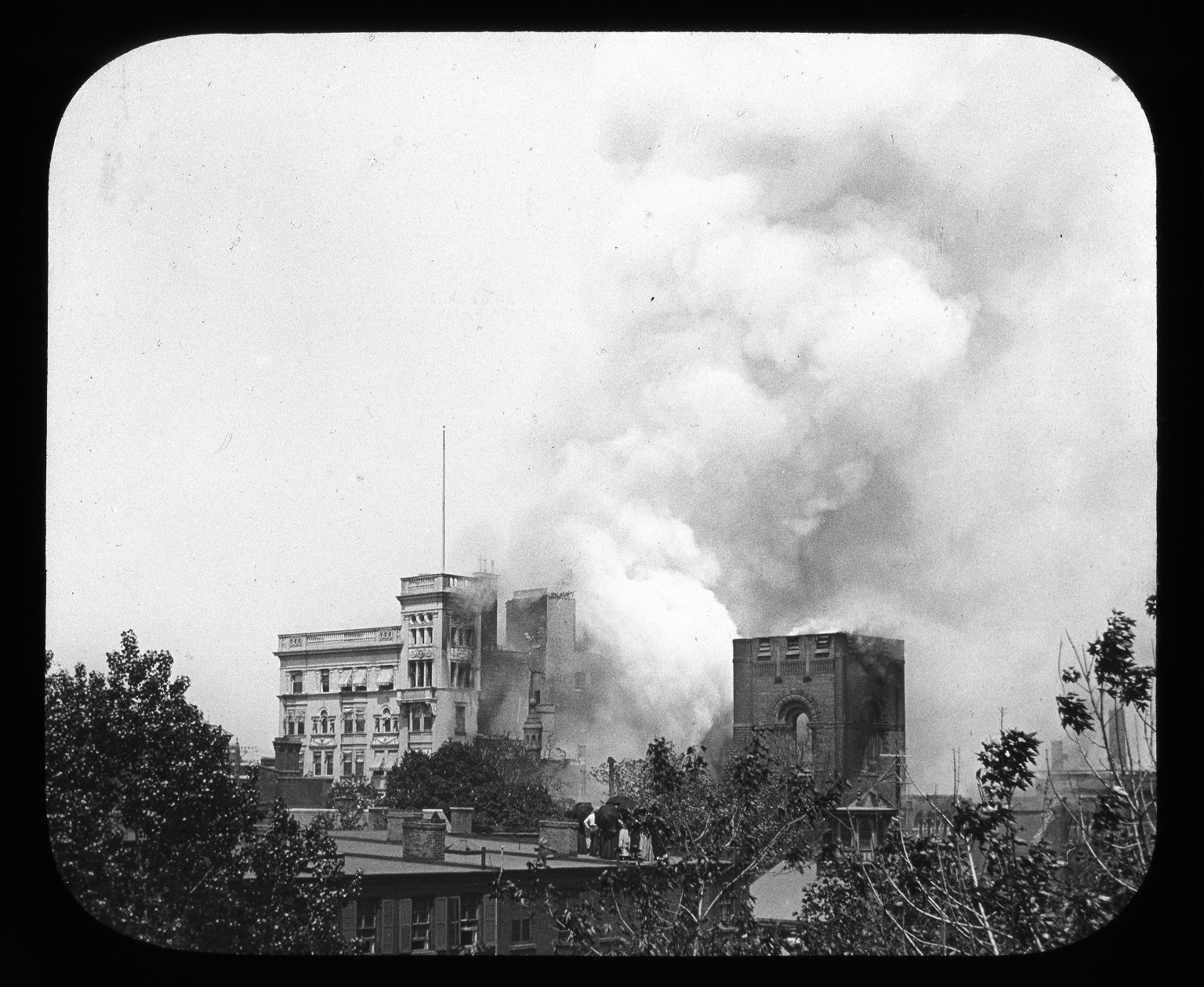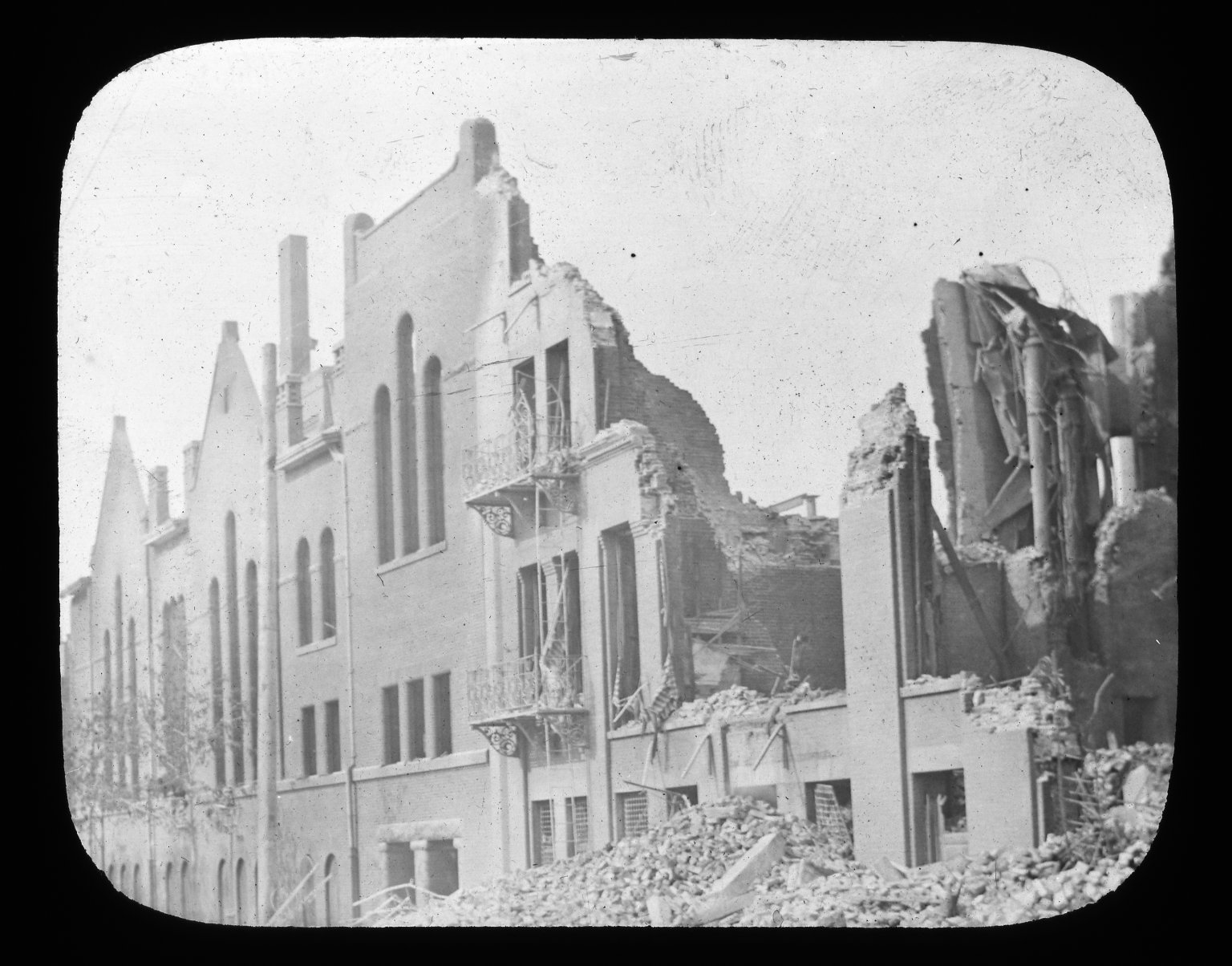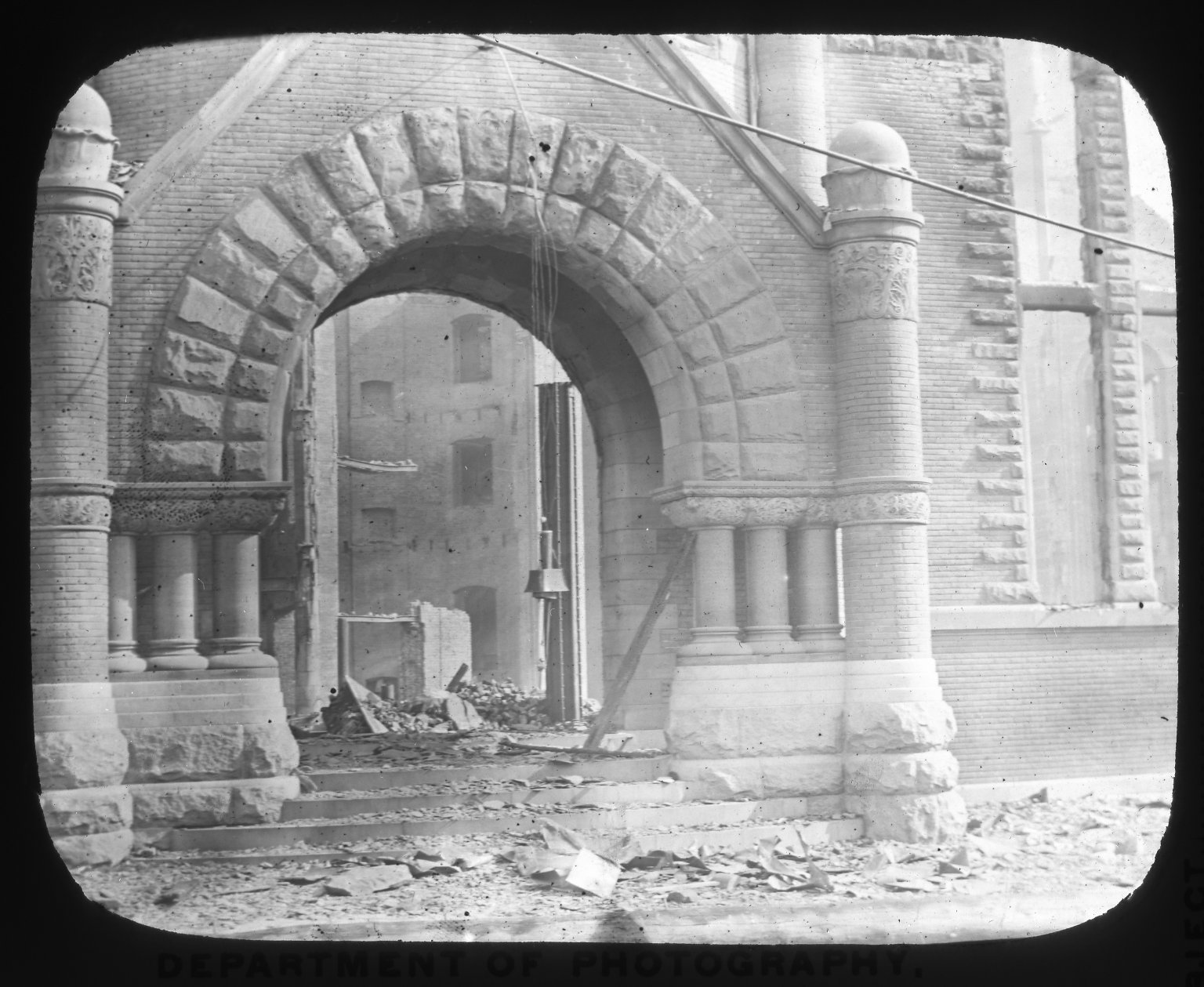Tracing the Tale of Talmage’s Tabernacle
As one of the interns taking part in Project CHART, I have been working with the Museum’s collection of lantern slides. Many of these were taken by members of the Department of Photography of the Brooklyn Institute of Arts and Sciences, the museum’s predecessor, and mostly between 1880 and 1900.
.jpg)
Brooklyn Museum Archives, Lantern Slide Collection. Interior of the Tabernacle.
The range of subject matter is broad, but one image appears again and again: Talmage’s Tabernacle. What is interesting about these photographs of the church is not only that there are so many in the collection, but also how the church is shown: in flames, or in ruins after the fire. I was intrigued by these images, and went looking for more information on the church whose destruction was so thoroughly documented, and the story I discovered was even more compelling than I had anticipated.

Brooklyn Museum Archives, Lantern Slide Collection. Burning of the Tabernacle and Hotel Regent.
The church in the pictures, which was on Clinton Avenue and Greene Avenue in Clinton Hill, was built by the Reverend Doctor Thomas DeWitt Talmage, a pastor of the Presbyterian Church. One of his contemporaries claimed that “no other man in the world today exercises such an influence as Talmage.” When Talmage began as pastor of the Brooklyn Tabernacle, his congregation had nineteen members. Five years later, this number had swelled to literally thousands of people. He built a church on Schermerhorn Street and what is now Third Avenue to house these worshippers, and even in this new building had to hold three services each Sunday in order to accommodate them all.
On December 22nd, 1872, two years after it was built, the first Tabernacle was destroyed by fire. The church was rebuilt in the same location; this second building suffered the same fate as the first, on October 13th, 1889. After the second fire, Talmage left Schermerhorn Street to build his third Tabernacle, the one in the museum’s photographs. On May 13th, 1894, the third Brooklyn Tabernacle burned to the ground. All three of the fires took place on Sundays, narrowly avoiding the huge crowds that filled the buildings on that day.

Brooklyn Museum Archives, Lantern Slide Collection. Ruins of Dr. T. DeW. Talmage's Church, Greene and Clinton Aves.
After the third fire, it came out that the Tabernacle on Clinton Avenue had been built using macerated paper stock and straw soaked in resin rather than the standard plaster, making the building, in the words of The New York Times, a “tinder box.” The unusual and imprudent use of this material in the construction of the building is made to seem even stranger by what happened after it was discovered. Talmage wrote a letter to the Times, claiming that he believed the church had burned to “purify” his parishioners “by fire” and to “keep [him] humble.” He left New York immediately afterwards, heading to Australia and then to Europe, and never returned to New York.

Brooklyn Museum Archives, Lantern Slide Collection. Tabernacle After the Fire.
Without Talmage, the enormous congregation of the Brooklyn Tabernacle disbanded practically overnight. The week after the fire, a service was held at the Columbia Theater, but no more than three hundred of the thousands of members of Talmage’s church attended. A telegram from Talmage was read by a Reverend George, who officiated the service in Talmage’s place. His message was as follows, "I send my benediction to the Brooklyn Tabernacle congregation and Sunday school. I love you all more and more every day. May God be with you till we meet again." According to the Times, the reading of the message was met “with dead silence.” The congregation of the Brooklyn Tabernacle never met again.
I can’t say for certain what actually took place; perhaps there was something dubious about the three fires of Talmage’s Tabernacle, or perhaps it was simply a case of terrible coincidence. But the fascinating story of this uniquely charismatic man, the triple destruction of his church, and both his sudden disappearance and his congregation’s instant dissolution after two decades of mutual devotion blew me away. It serves as a clear reminder of the fact that each of these photographs has a story behind it, and that represented in these images is the rich history of our borough and our city. All we have to do is look for it, and we are lucky to have such rich sources at our disposal.
Note: There is now a Brooklyn Tabernacle on Smith Street, a non-denominational congregation best known for its world-renowned choir. As far as a can tell, there is no connection between this church, led by the Reverend Jim Cymbala, and Talmage’s. The following are links to some other online resources about the Tabernacle and Talmage:
"Church and people gone: Strange story of tabernacle, pastor, and congregation." (May 20. 1894).The New York Times. Accessed April 28, 2011 from http://query.nytimes.com/mem/archive-free/pdf?res=F40617F83D5415738DDDA90A94DD405B8485F0D3
"Tabernacle a tinder box." (May 18, 1894). The New York Times. Accessed April 28, 2011 from http://query.nytimes.com/mem/archive-free/pdf?res=F20711FB3D5415738DDDA10994DD405B8485F0D3
"Talmage on the how and why: Expects knowledge of Tabernacle fires in the next work." (June 10, 1894). The New York Times. Accessed April 28, 2011 from http://query.nytimes.com/mem/archive-free/pdf?res=9C07E6D61F39E033A25753C1A9609C94659ED7CF
Worshipped in a theater. (May 28, 1894). The New York Times. Accessed April 28, 2011 from http://query.nytimes.com/mem/archive-free/pdf?res=F30F1EF83D5415738DDDA10A94DD405B8485F0D3
By Marina Kastan - Brooklyn Museum intern


![[Group Portrait of Women in Cooking Class]](../sites/default/files/imagecache/70x60/externals/c40f19627d1f283bc758589ca426486d.jpg)











